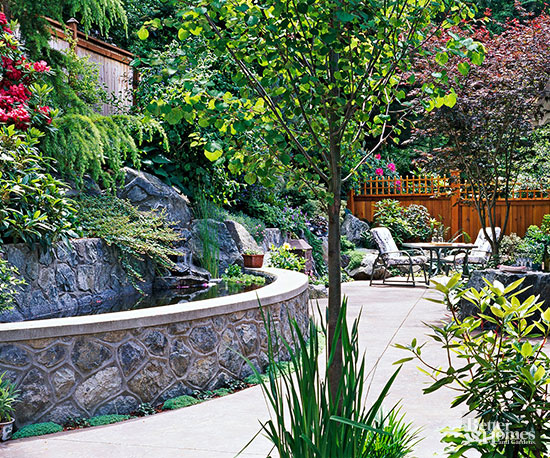






Landscaping -- done well -- adds greatly to your property's value, but it should also suit your needs. Rather than starting with things you can add to your landscape, begin by removing the detractors. Then you can move on to adding landscape components that bring enjoyment and value to your home. Here are a few suggestions for breaking the task into workable steps:
Trees. Mature trees are a tremendous asset, but if branches are dying, rubbing against the roof, or threatening to fall in a storm, pruning or removal is in order. For work on tall trees, call in a professional.
Safety concerns. Does anything pose a safety hazard? For example, look for obstacles on pathways, foliage that blocks sight lines from sidewalks or driveways, crumbling retaining walls, drainage problems, or a blocked view of the front door.
Existing beds. Examine plants to see if they are healthy and uncrowded. If you notice disease problems, determine whether they are due to an environmental condition, such as compacted soil or poor air circulation.
Lawn. Is there an apparent problem with disease or weeds? How difficult is the terrain to mow? Is there too much lawn or not enough?
Curb appeal. Step across the street and look at your house for a few minutes. The front entry, and access to it, should be easy to see and look inviting. The trees, shrubs, and other plants should frame the home, make it look attractive, and not overwhelm it.
continue reading below
Professional help. Even if you're on a limited budget, consider getting professional landscaping help. The more difficult and expensive the project, the more likely you are to need someone trained in this field. A good landscape architect or designer can make suggestions at differing levels of expense. The expert can help you prioritize what needs to be done first and figure out which parts you can do yourself.
Mapping it out. Before you dig or plant, have the yard marked for utility lines, property lines, an irrigation system, or a buried pet fence. Avoid damaging the root systems of existing trees by digging too closely to them or compacting soil with heavy equipment. Check local regulations about planting near streets and sidewalks and about requirements for water gardens.
Anchoring plants. Trees and shrubs are usually the biggest plant investments in your yard, so choose carefully. Have some idea of what you want before you go shopping. Your cooperative extension service will have good information about plants that thrive in your area.
Hardscaping. Patios, decks, retaining walls, garden structures, and pathways can make a difference in how much you enjoy your property and can create more outdoor living space.
Flower beds. Adding flower beds can be a simple and inexpensive way to increase curb appeal. With any flower bed, soil preparation is key. Planting the right plants in the right soil is the first step toward that goal.
After you've made changes in your landscape, remember to take pleasure in it. Disappointed in what you see? That's all right; you can change it again. Most gardens are a work in progress. The important thing is for you and your family and friends to be out there enjoying it!
Copyright © www.100flowers.win Botanic Garden All Rights Reserved